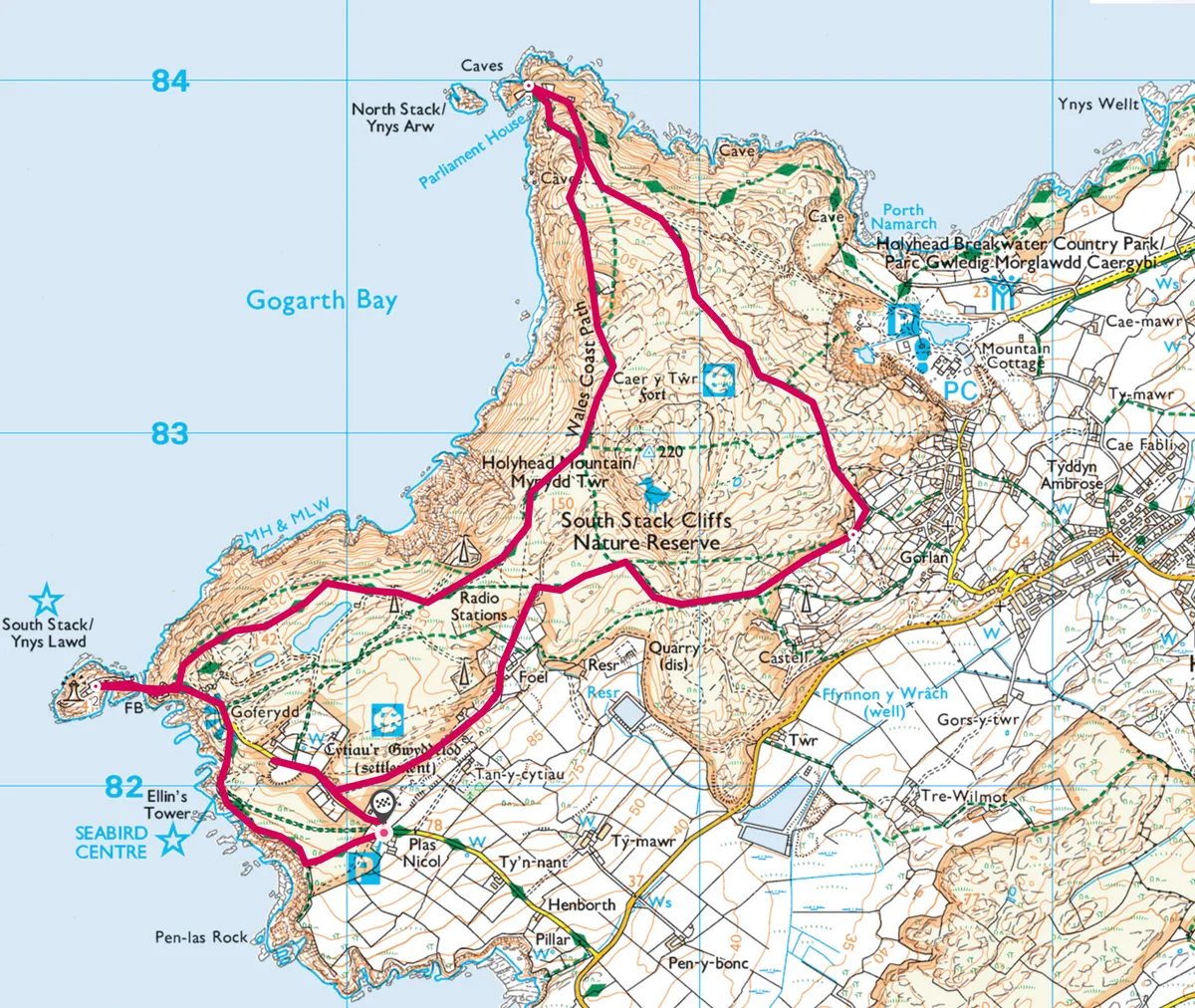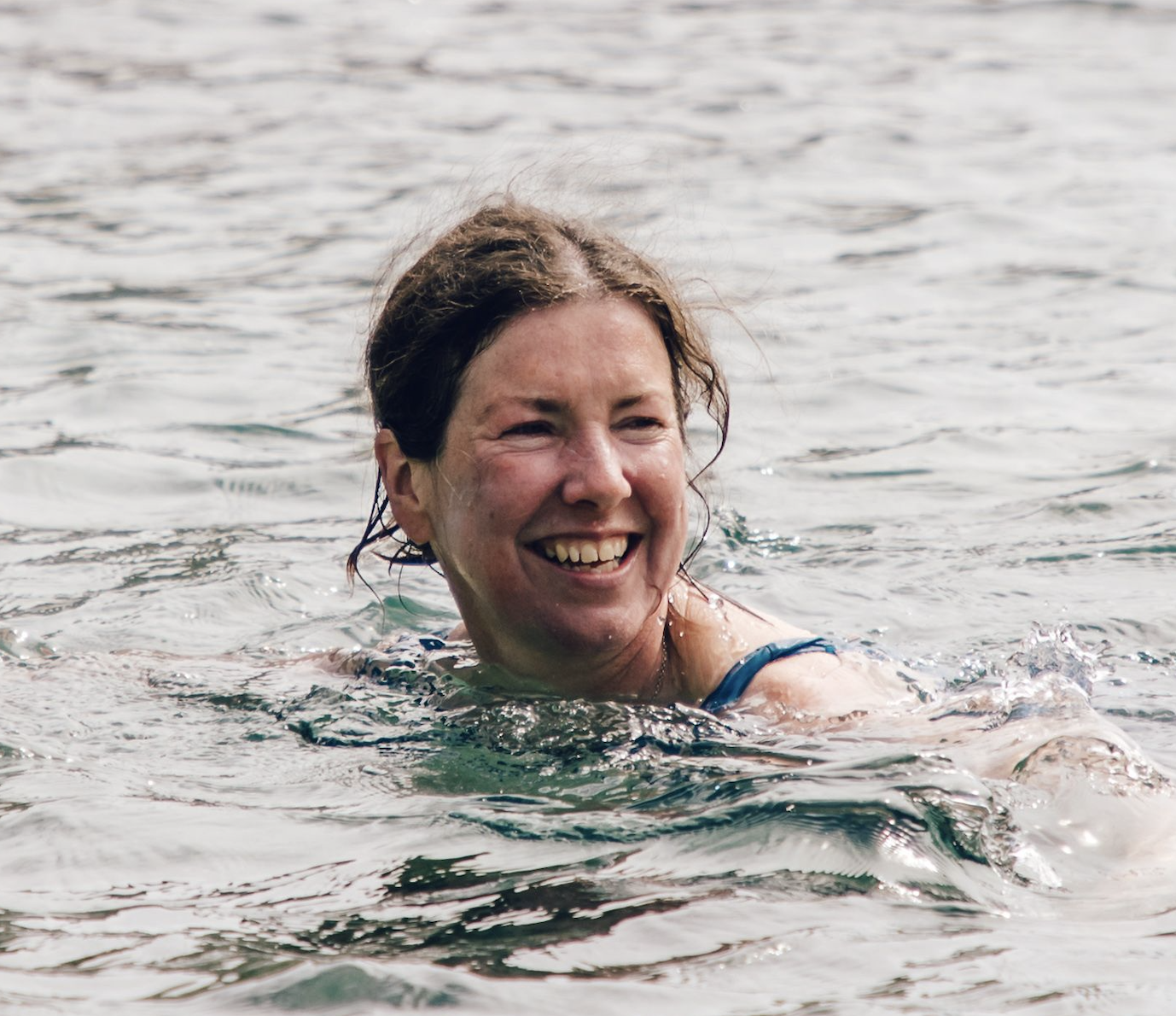Near the bottom of the steps to South Stack Lighthouse is a seat for one carved into a fissured rock, from which you can peer through to the South Stack Cliffs.
It’s a strange experience, if you know the cliffs in summer, to see them in winter. In the warmer months, they’re alive with 10,000 breeding puffins, guillemots, razorbills, fulmar petrels, shags and kittiwakes, noisily making use of the ledges.
Follow our circular walking route to South Stack in Anglesey in Wales.
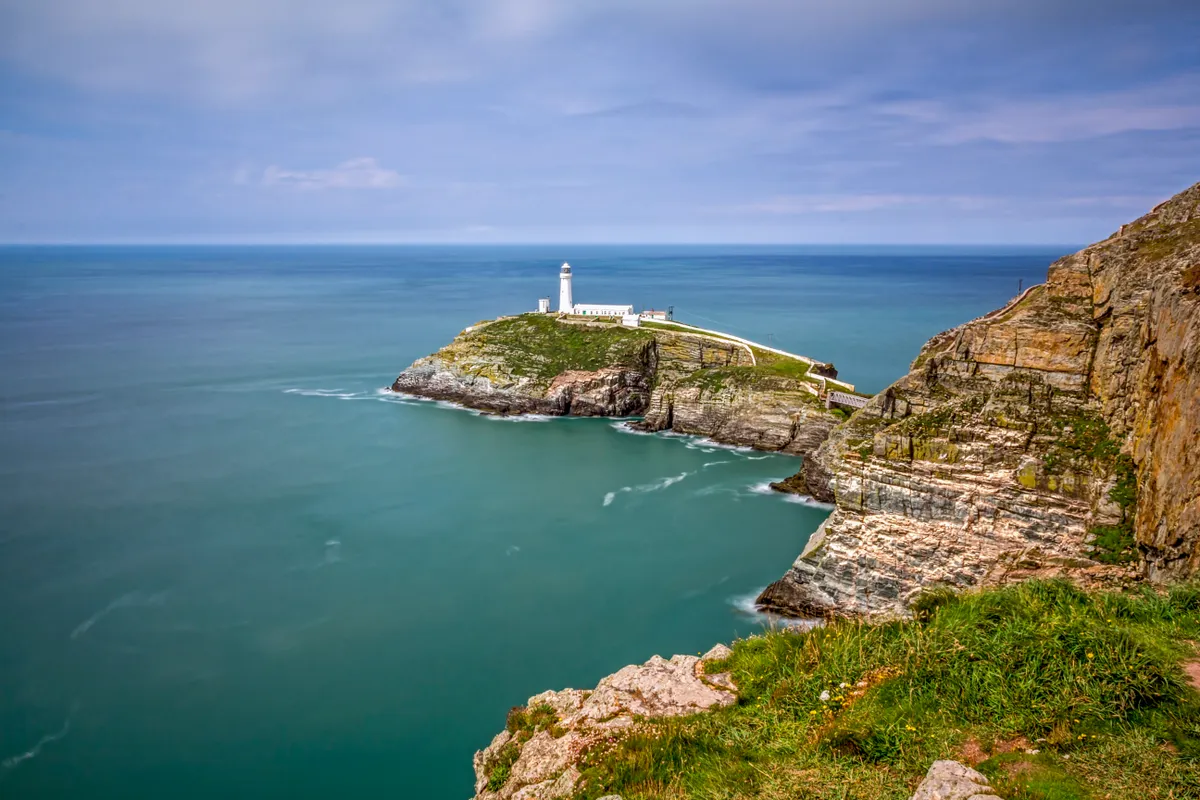
But in winter, the rock is largely silent and still, save for the sound of crashing waves below. Without the auks, you can see the detail of the Precambrian rock, bent from the Earth’s movements into grimaces and smiles. Rust-red, blue-grey and yellow, it has a strange toughened texture, somewhat akin to partially melted plastic. Scanning it for birds, there appear to be none. And then there’s a slight movement, barely a blur, almost imagined. A rock pipit, perfectly camouflaged, appears from a crevice to feed.
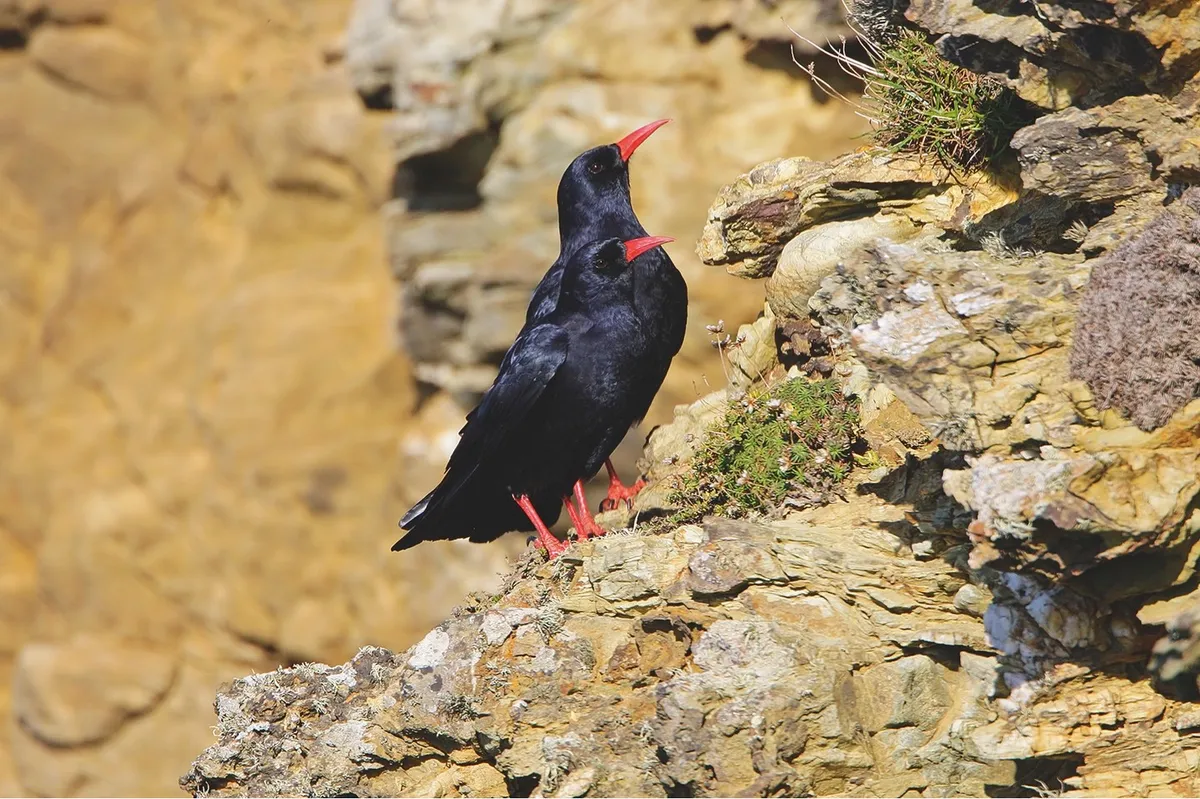
The coast continues as a curving rock wall around Gogarth Bay to North Stack. Above them is Holyhead Mountain, its shattered quartzite summit dominating the headland. In summer, its surface glitters and heather cushions its jagged spikes.
But in winter, in a whistling wind, its frost-spangled rock contrasts sharply with the black peat at its feet – it seems colder, brittle. But, even then, there are birds.
Wildlife at South Stack
Collectively, North and South Stack, Gogarth Bay and Holyhead Mountain form the most westerly peninsula in Anglesey. It’s a draw not only to the cliff-breeding auks, gulls, petrels and peregrines, but also, in autumn and spring, to passing migrants such as ring ouzels, grasshopper warblers, wheatears, crossbills, redstarts, and occasional rarities such as dotterel and Lapland bunting.
It has year-round residents, too: ravens, oystercatchers, rock pipits, carrion crows, stonechats, jackdaws, linnets, gulls and meadow pipits.
Some 300 hectares of this headland, with its rocks, cliffs, lowland heath and pasture, is looked after by South Stack RSPB Reserve. The farmland is managed to allow birds to forage for invertebrates.
Cough
Glossy black plumage, a red bill, legs and feet, and a distinctive ‘chee-ow’ call. This bird has an aerobatic, tumbling flight, lives in cliffs and quarries, and feeds on invertebrates in short grass. The chough is the rarest member of the crow family due to a decline in habitat ©Naturepl.com
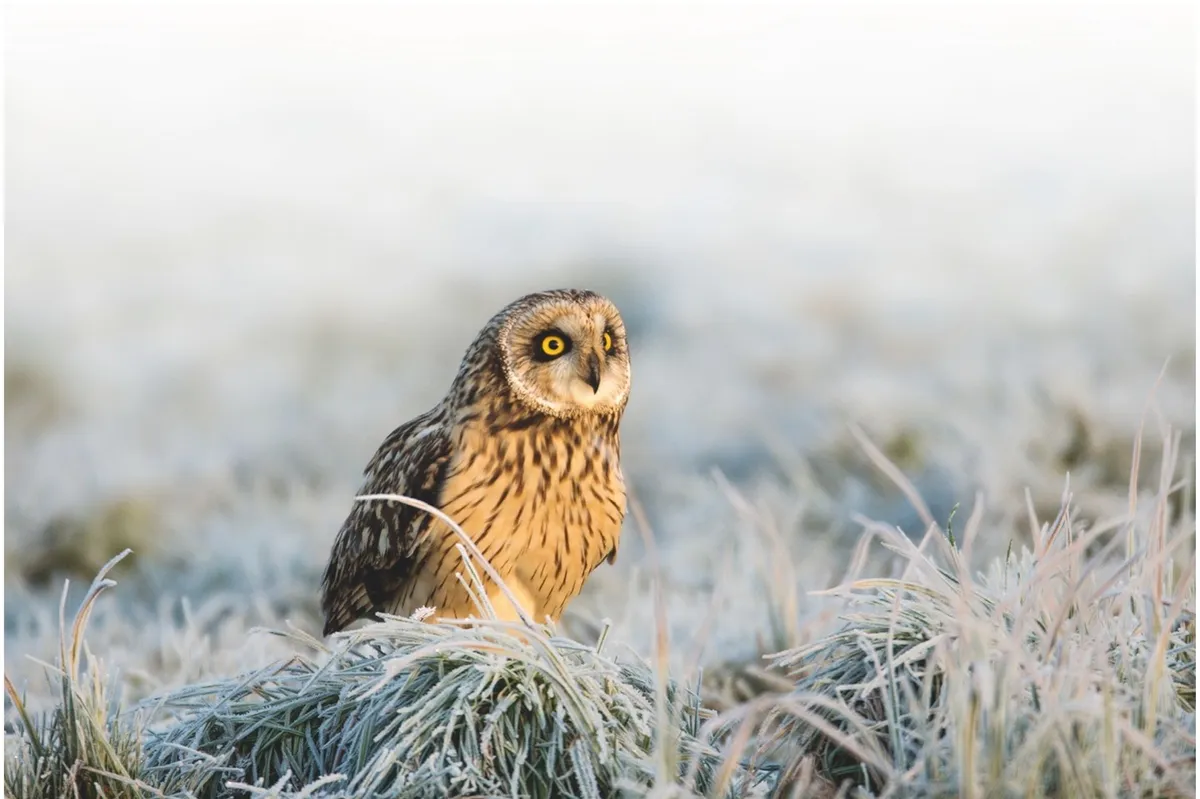
In winter, storms scour the cliffs, but skuas and flocks of choughs – with red legs and beaks, and ‘cheeyow’ calls – thrive. Strong winds seem to fling them beautifully about like charred bits of paper from a fire. Their larger corvid relatives, the ravens, are also prolific. With audible wingbeats and distinctive ‘cronkings’, they often cruise at ease with claws a-dangle, like pilot pioneers hung beneath flying machines. Gannets patrol the sea with efficient flight.
A short-eared owl glides over the heath. Sometimes, great and Arctic skuas come foraging up the coast, bullying smaller birds for their food. And occasionally, if conditions are right, you can watch great northern divers tossing about on the sea.
Short-eared owl
In winter, an influx of migrants from northern Europe causes UK short-eared owl populations to swell. Their ear-tufts are not always visible – look for yellow eyes and pale underparts to distinguish them from other birds. Often seen hunting by day with floppy-winged flight ©Natural.com
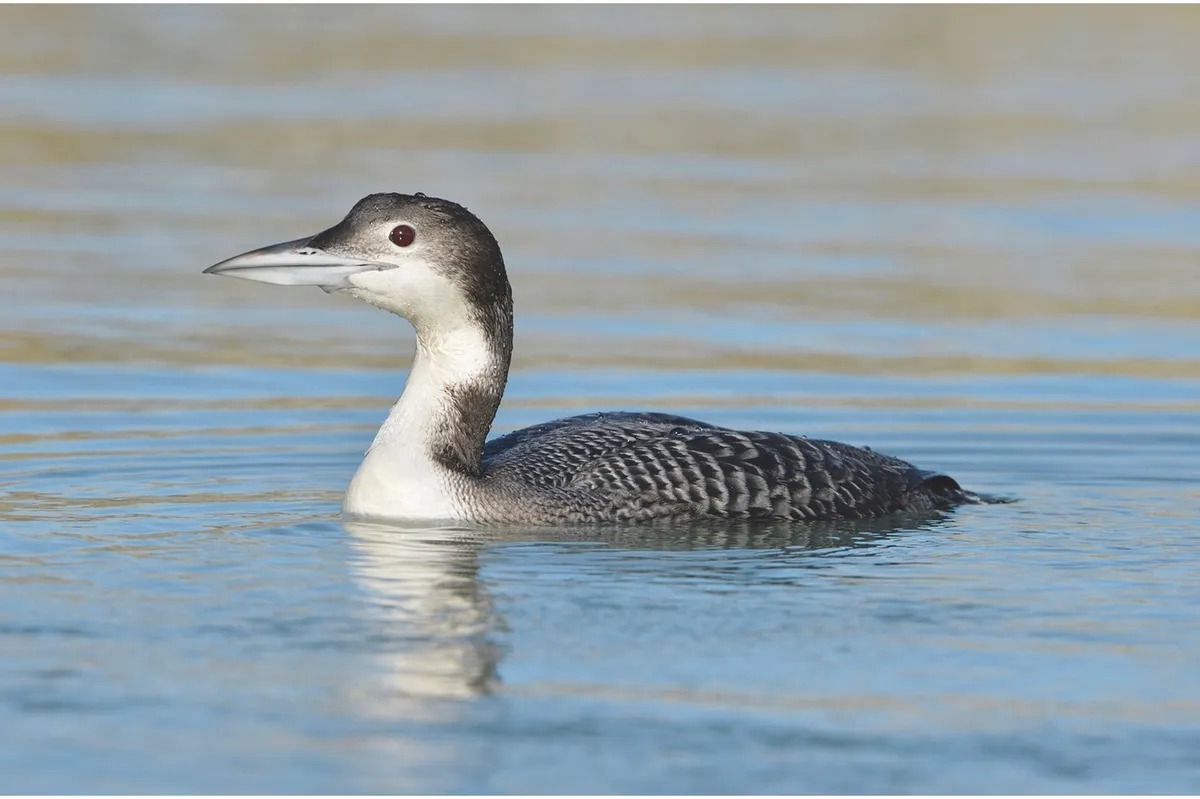
Great northern divers are thought to be the oldest bird species in the world. Large and powerful, their red eyes may help them see underwater on fishing dives up to 60m deep. They breed in North America and winter on Atlantic shores, gathering in large numbers around the north-west coast of Scotland. A strong north-westerly wind, however, can push them south.
Northern Diver
The bold black and white breeding plumage and checked mantle of the common loon, as it is also know, become duller in the winter months. This large bird (60-100cm) is a powerful swimmer and diver, eating mostly fish, but clumsy on land and take-off ©Naturepl.com
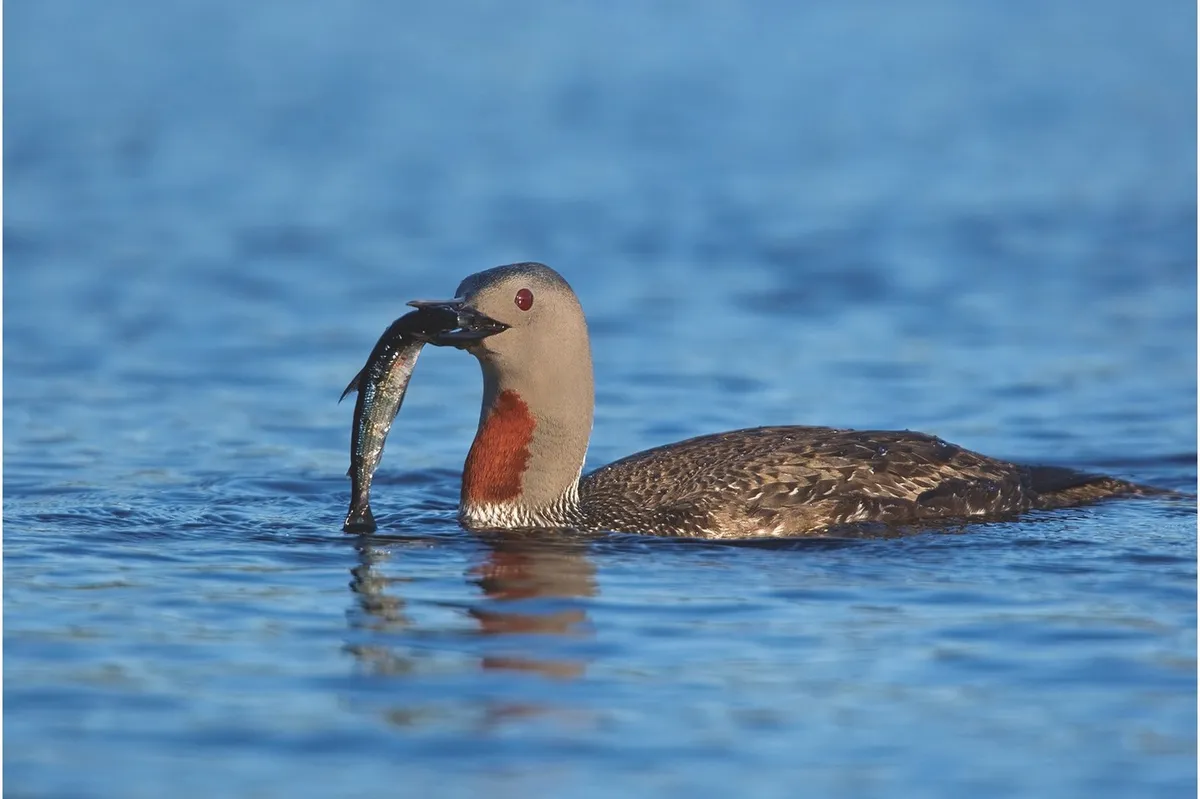
It takes a keen eye to discern them on a churning sea from other divers, cormorants and ducks. And according to RSPB warden Denise Shaw, you’ll also need “a couple of hours sitting still with a telescope, a flask of hot tea and some butties.”
If you run short of patience and sandwiches, this 5.5-mile circular walk around the RSPB reserve will allow you to spot the less elusive residents. The path, steep and rough in some sections, is generally not too taxing. Those arriving by bus will need to walk the coast path from Holyhead and start and finish their walk at North Stack.
South Stack walk
5 miles/8.2km | 3 hours | moderate
1. Roaming raptors
From Ellin’s Tower car park, cross heath to reach the coast path. Look out for peregrines as you pass Ellin’s Tower, built in 1868 by the Lord Lieutenant of Anglesey as a summerhouse for his wife. Descend 400 steps to South Stack Lighthouse, open to visitors in summer.
Red-throated diver
The UK’s smallest diver is distinguished by a rufous plumage and upturned bill, with a red throat in summer. It winters on British shores in patchy numbers, and spends its summer in north-west Scotland. Eats mostly fish but sometimes feeds on molluscs and crustaceans ©Naturepl.com
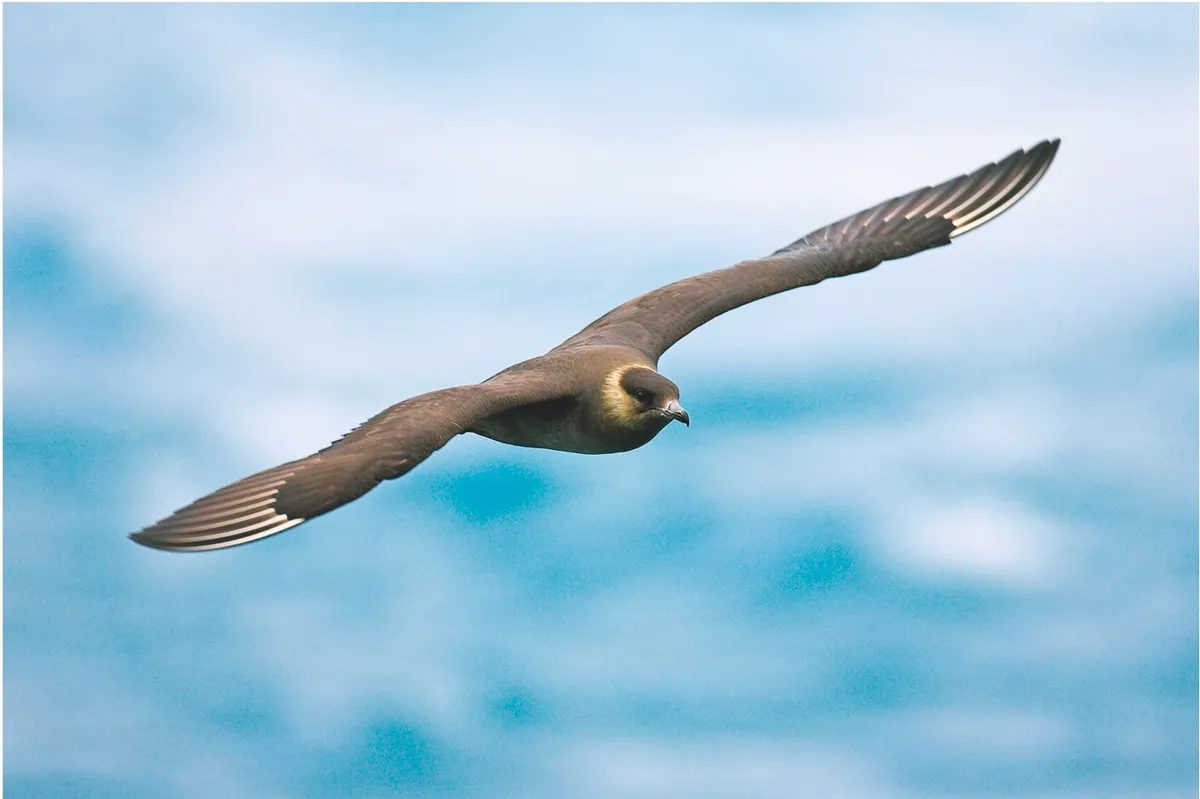
2. Lighting the way
Before the bridge was built, the lighthouse-keeper’s provisions were swung in by basket and pulley – the beacon is now automated. Look out for rock pipits on the cliffs, and for divers and seals in the sea.
Follow the coast path signs towards Holyhead Mountain, passing reed-fringed pools, and a shelterbelt of conifers used by migrants. White water stretches from South Stack out to sea, its surface cut from time to time by gannets and porpoises that feed on the tidal races. Ignore the summit path, unless you fancy a quick ascent.
The trail bends towards North Stack with Gogarth Bay below. Look out for divers and skuas, and gannets patrolling the water like gliders.
Arctic Skua
A medium-sized, dark-feathered seabird that flies swift and low over water. It spends its life at sea, only visiting land to breed. The Arctic skua eats fish, eggs and fledglings, and is known to chase other birds, twisting and turning to make them drop their food ©Naturepl.com
3. Chough way
Descend towards North Stack and the foghorn station, looking back across Gogarth Bay for divers blown off course, and Atlantic grey seals.
Retrace your steps and, instead of joining the coast path, take the higher route to meet the chough path. Below you are steps once used by donkeys carrying provisions to the foghorn station, and a domed building used to store gunpowder to fuel the foghorn. Rounding the mount, you’ll see Holyhead Breakwater – in the 19th century, seven million tons of stone were dug from nearby quarries to build it.
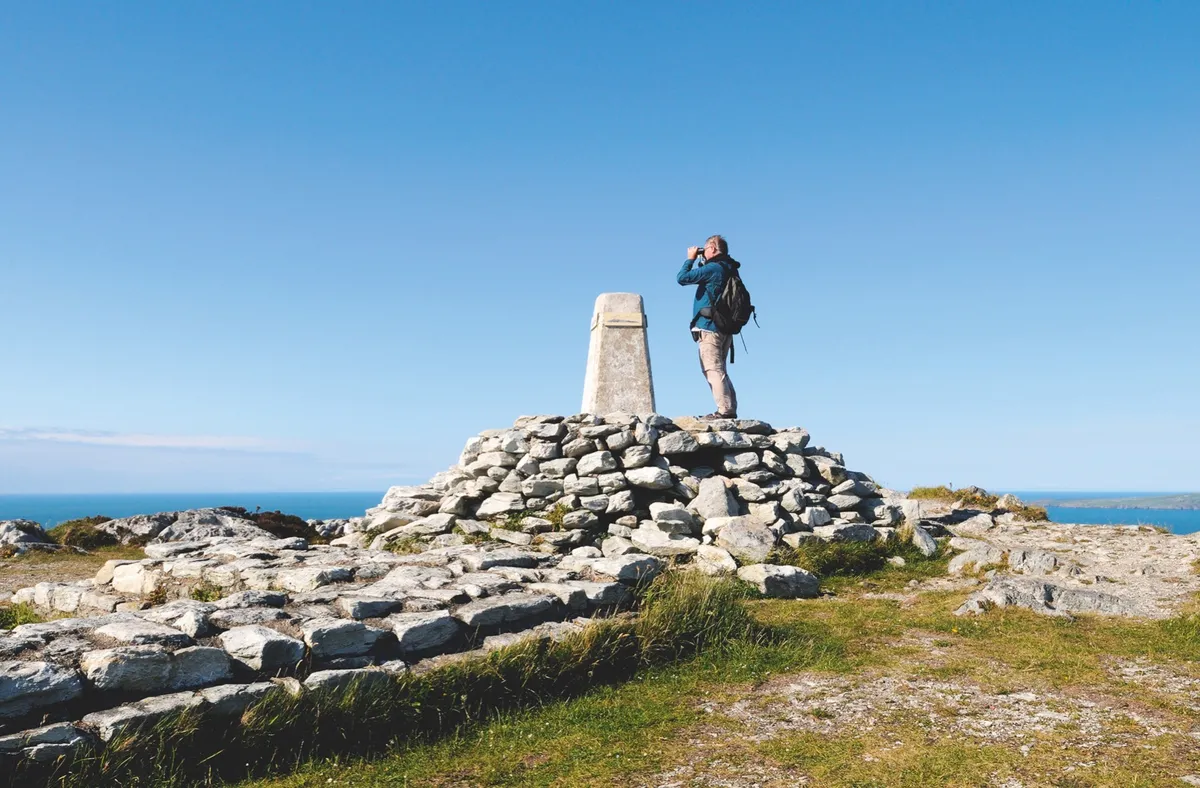
4. Path to prehistory
Above you on the summit is Caer y Twr. The Iron Age fort was occupied by the Romans, its walls almost imperceptible from the mountain itself. As you pass beneath, look for stonechats, rock and meadow pipits, choughs, linnets and short-eared owls. Below the path are several prehistoric hut circles, well worth a visit at the end of your walk, before finishing with coffee and cake at the RSPB visitor centre, just north of the car park.
South Stack Map
South Stack walking route and map
